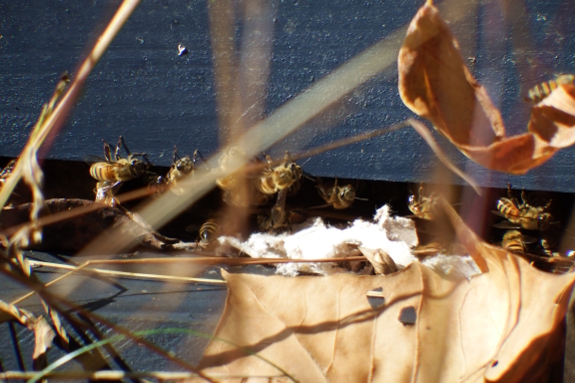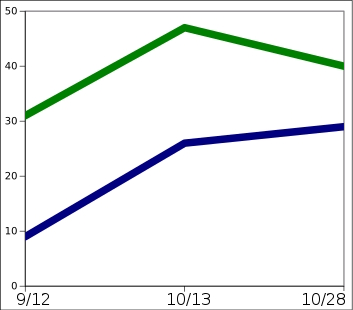
Rhubarb varroa-mite treatment results

Two weeks after treating
our Langstroth hive with rhubarb-infused
paper strips, it was time for the moment of truth --- had varroa
mite counts increased, decreased, or stayed the same in the face of the
treatment?
 The
graph to the left shows the results (blue line is the untreated Warre
hive and green line is the treated Langstroth hive). Over the last two
weeks, the Warre mite count continued to increase, albeit at a
decelerated pace, while the Langstroth mite count actually went down.
The
graph to the left shows the results (blue line is the untreated Warre
hive and green line is the treated Langstroth hive). Over the last two
weeks, the Warre mite count continued to increase, albeit at a
decelerated pace, while the Langstroth mite count actually went down.
Of course, these few
data points aren't really enough to prove anything. Maybe the
Langstroth hive is merely cutting back its brood chamber the way bees
always do in the autumn while the Warre hive is a bit behind. Maybe the
mites per bee haven't changed in either hive at all.
Still, it's a heartening
trend, suggesting that rhubarb strips might be a valid alternative to
other types of varroa-mite treatment in borderline hives. The big
question will be --- which hive is doing better in the spring?
Want more in-depth information? Browse through our books.
Or explore more posts by date or by subject.
About us: Anna Hess and Mark Hamilton spent over a decade living self-sufficiently in the mountains of Virginia before moving north to start over from scratch in the foothills of Ohio. They've experimented with permaculture, no-till gardening, trailersteading, home-based microbusinesses and much more, writing about their adventures in both blogs and books.
Want to be notified when new comments are posted on this page? Click on the RSS button after you add a comment to subscribe to the comment feed, or simply check the box beside "email replies to me" while writing your comment.
